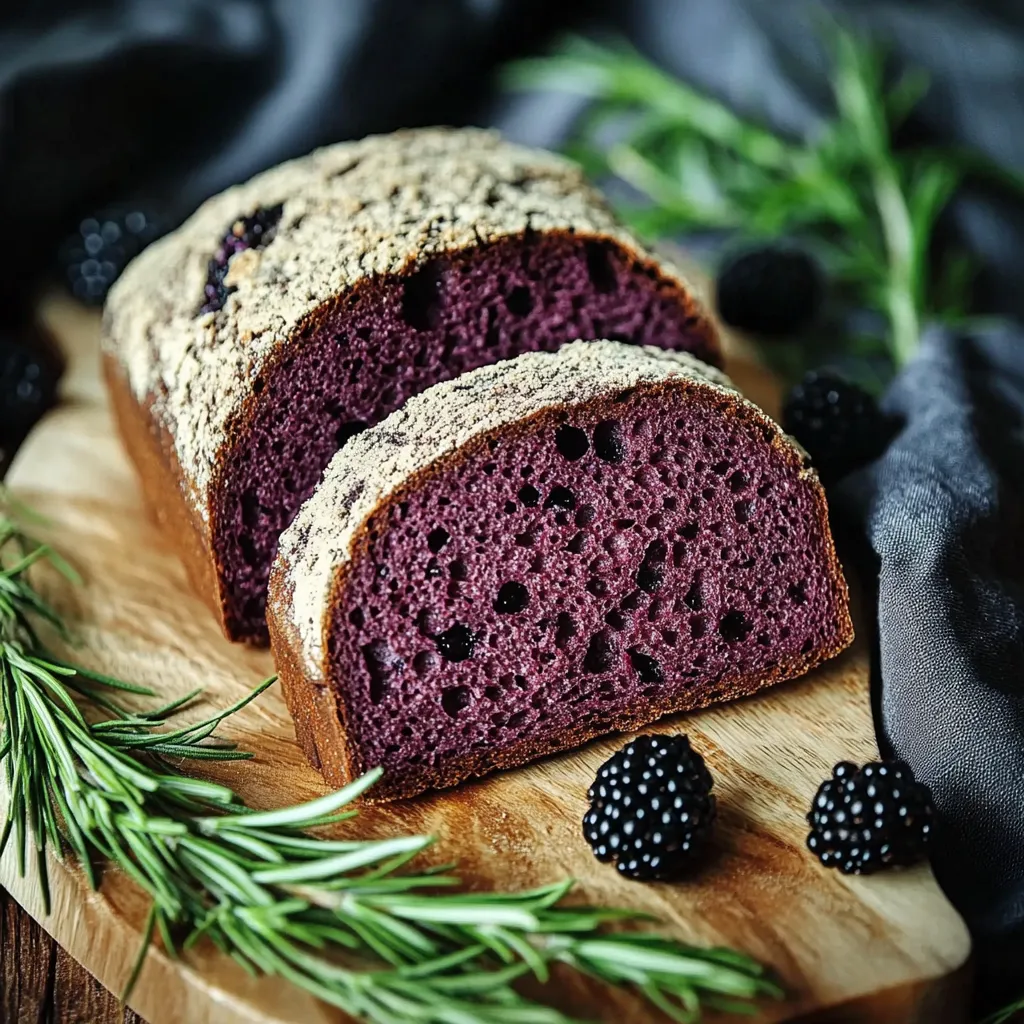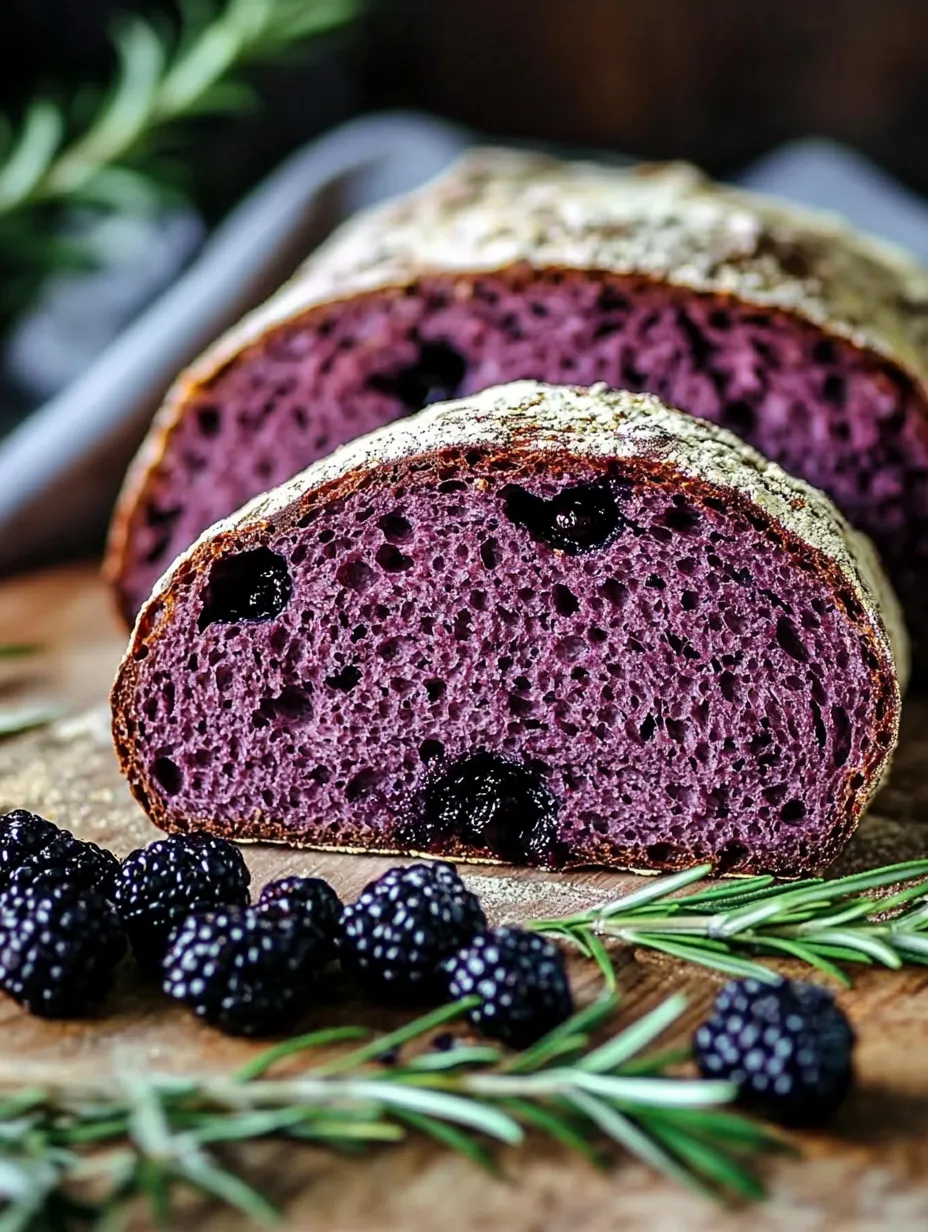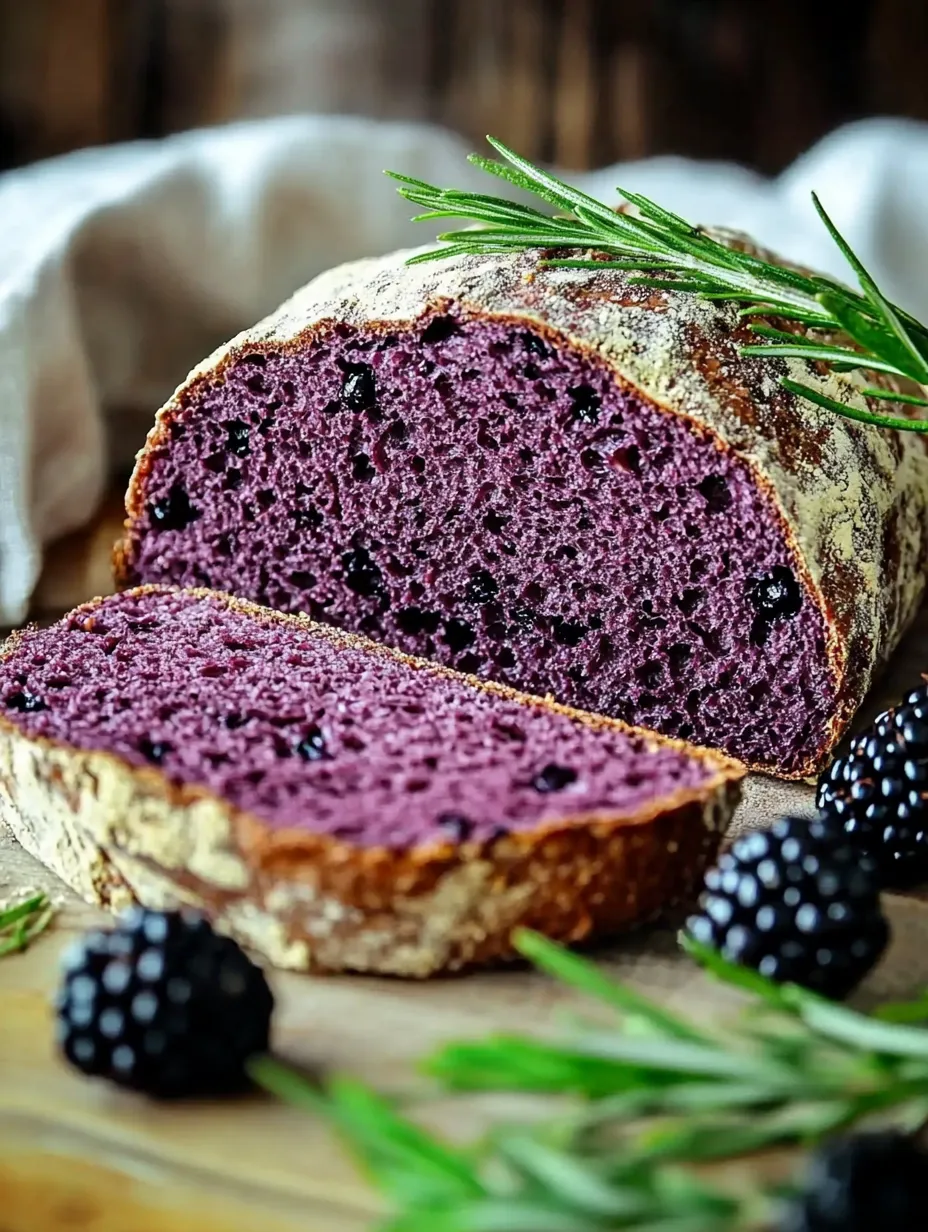 Pin it
Pin it
A country-style sourdough bread bursting with juicy blackberry flavor and fragrant rosemary notes, turning potential food scraps into an outstanding, eco-friendly loaf. This method honors old-world thriftiness while creating something remarkably tasty and different.
I've tried lots of ways to use up fruit pulp and found mixing it into sourdough doesn't just add amazing color—it brings moisture and gentle fruit hints that make every bite better.
Key Ingredients Breakdown
- White spelt flour: Brings a slightly sweet, nutlike taste that works great with the fruit
- Blackberry pomace: Needs good draining to keep the dough from getting too wet
- Fresh rosemary pomace: Adds wonderful herbal undertones
- Active rye starter: Gets your fermentation going properly
- Fine sea salt: Boosts all the flavors while helping control the rise
From my many years making sourdough, I've learned that having a lively starter and getting the water amount just right really matters when you're adding extras to your dough.
Making Your Loaf
- First Mix
- Mix everything until your dough comes together and stops sticking to the sides of your bowl.
- Main Rising
- Let the dough develop its flavors during a slow rise at room temp.
- Overnight Chill
- Deepen the taste by letting it rest in the fridge overnight.
- Last Shaping
- Build surface tension without damaging the dough structure.
- Oven Setup
- Create enough steam for that perfect crusty exterior.
I've found through all my sourdough making that taking your time with fermentation lets the pomace flavors really sink into the dough.
Delicious Serving Ideas
Try this bread with a smear of salted butter, a drizzle of honey, or use it for sandwiches with bold cheeses and crisp greens.
Fun Twists to Try
Play around with other fruit pulps like raspberry or grape, or swap in herbs such as thyme or sage instead.
 Pin it
Pin it
Keeping It Fresh
Store your loaf in a paper sack at room temp for about 3 days, or cut it up and freeze it to enjoy later.
After baking hundreds of loaves, I now know that success with fancy additions like pomace means watching water content and spotting the right fermentation signs.
Managing Your Temps
- Keep your dough around 75-78°F during the main rise
- Chill at 38-40°F for the best flavor development
- Get your oven really hot before baking for a good rise
Working in bakeries taught me that getting temperatures right makes all the difference when making enriched sourdough consistently well.
Keeping Your Starter Happy
- Feed your starter regularly before baking day
- Watch for it to double and get bubbly all over
- Use it when it's most active for best results
How to Shape Right
- Handle your dough carefully so you don't lose the rise
- Create good tension on top without squashing air pockets
- Use just a tiny bit of flour when shaping
Water Balance Basics
- Change water amounts based on how wet your pomace is
- Pay attention to how the dough feels while mixing
- Think about how humid your kitchen is when mixing
 Pin it
Pin it
Spotting Perfect Fermentation
- Look for dough to grow by about 30-50%
- Check for tiny bubbles forming on top
- Feel for the right stretchiness in the dough
Fixing Common Problems
- Too dense inside: Didn't rise enough or too much water
- Pancake loaf: Over-risen or weak gluten structure
- Sticky middle: Didn't cool enough or cut too early
Cool Scoring Ideas
- One bold slash for oval-shaped loaves
- Simple cross cut for round loaves
- Several fancy cuts to make it look amazing
Tools You'll Want
- Dutch oven or baking stone for perfect heat
- Banneton baskets to help hold shape
- Sharp blade for clean cuts
Earth-Friendly Habits
- Keep pulp from your juicing projects
- Toss extra pomace in the freezer for later
- Add unused bits to your compost
Over my years working with sourdough, I've learned that knowing what good fermentation looks like and keeping temps steady makes all the difference with fancy doughs like this one.
Learning to work pomace into sourdough has shown me that being patient and watching the little details leads to an incredibly flavorful bread that's good for the planet too.
Frequently Asked Questions
- → What does pomace mean?
- It's the fruit leftovers after juicing or winemaking, great for adding flavor and moisture.
- → Why is fermentation so long?
- It helps boost taste, make the texture better, and makes the bread easier to digest.
- → Is a baking stone necessary?
- Not a must, but it helps with crust. A Dutch oven or loaf pan works too.
- → What's the point of adding steam?
- It helps the crust get crispy and lets the bread rise properly.
- → Can all-purpose flour work?
- Sure, though spelt gives a nuttier taste and a better texture.
